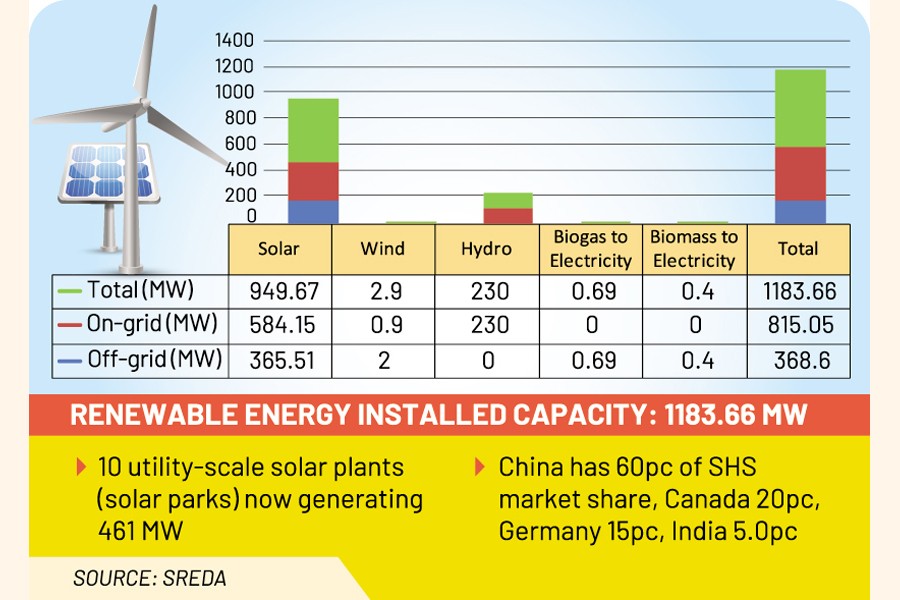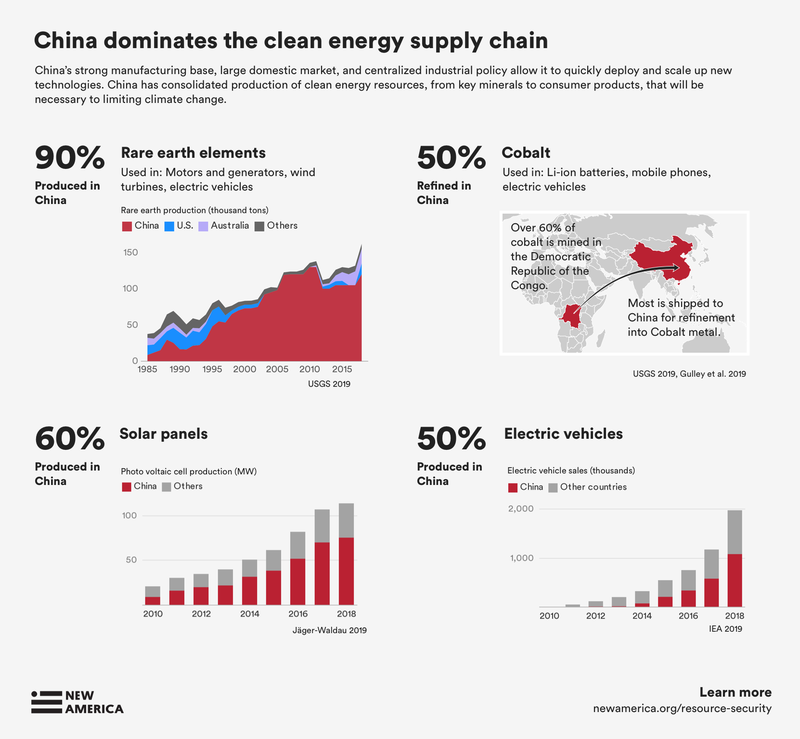Black_cats
ELITE MEMBER

- Joined
- Dec 31, 2010
- Messages
- 10,031
- Reaction score
- -5
China dominates Bangladesh’s clean energy market
SAJIBUR RAHMANPublished :
Jun 23, 2023 10:24 PM
Updated :
Jun 23, 2023 10:25 PM

China dominates Bangladesh’s clean energy market
Low-cost Chinese technology has been playing a pivotal role in shaping Bangladesh's green-energy sector, particularly in the solar industry, over the past 15 years. The financial impracticality of importing solar panels and accessories from Europe has driven Bangladesh towards Chinese solutions.
Low-cost Chinese technology has been playing a pivotal role in shaping Bangladesh's green-energy sector, particularly in the solar industry, over the past 15 years.
The financial impracticality of importing solar panels and accessories from Europe has driven Bangladesh towards Chinese solutions.
Solar energy constitutes a significant portion of Bangladesh's renewable-energy mix. The country relies on various solar-powered systems, including solar home systems (SHS), grid-tied solar PV power plants, solar mini-grids, rooftop solar installations, solar irrigation systems and solar street lights.
As of June this year, the total electricity generated from solar energy amounted to 949.65 MW.
According to data from the state-owned renewable infrastructure projects financier IDCOL, over 4.5 million solar home systems are currently operational in Bangladesh.
IDCOL data further show that China has captured 60 per cent of the solar home system market in Bangladesh, primarily due to its technological prowess. Canada accounts for 20 per cent of the market share, followed by Germany at 15 per cent and India at 5 per cent.
Besides, an analysis of Bangladesh's ten solar parks, which house utility-scale solar power plants, demonstrated the prevalence of Chinese technology in their construction.
All the solar parks are now operational, according to the Sustainable and Renewable Energy Development Authority (SREDA), with the construction of the first one beginning in 2017.
Energon Renewables, a subsidiary of industrial conglomerate Orion Group, constructed the largest solar park in Mongla, with support from the Chinese manufacturers Longi Solar and Sungrow Power Supply Co Ltd. Longi, a major Chinese photovoltaics company and solar module manufacturer, provided the photovoltaic (PV) panels, while Sungrow Power Supply Co Ltd, a Chinese company, supplied the central inverter solutions.
Once Teesta Solar Limited, a subsidiary of the Beximco Group, begins full operation of its 200 MW plant in the northern Gaibandha district, it will become the largest solar power plant in the country.
Teesta too sourced the panels from Longi, while Sungrow Power Supply Company Limited supplied the inverters.
Intraco Solar Power Ltd (ISPL) constructed a 30 MW solar park in Rangpur, receiving PV panels from Longi and inverters from Chinese tech giant Huawei.
Similarly, Joules Power Cox Bazar Solar PV Park, a 28 MW solar PV power plant located in Chittagong, obtained PV modules from Chinese JA Solar Holdings. Spectra Solar Park Limited (SSPL), which has a 35 MW plant in Manikganj, received technology support from Sungrow.
Local market insiders noted that the price per watt of European solar panels is 30-35 per cent higher than that of Chinese panels. Besides, the unit cost of inverters manufactured by European countries like Germany increased by 10-12 per cent compared to Chinese ones.
On top of competitive rates, experts and stakeholders highlighted that China dominates the critical minerals supply chain necessary for clean energy technologies due to its geographical concentration of these minerals.
They commented that if there are any quality concerns, Bangladesh should ensure sufficient testing of solar accessories. To facilitate this, Bangladesh should have adequate testing facilities, whether at the government-owned Bangladesh Standards and Testing Institution (BSTI) or engineering universities.
Last year, the International Energy Agency warned in a report that China's dominance of global solar panel markets has created a vulnerable supply chain that risks becoming overly reliant on the country.
Earlier, a study conducted by the Bangladesh Institute of Development Studies (BIDS) suggested that IDCOL should consistently seek better and tested technology that minimises maintenance issues while providing cheaper alternatives to current models, offering at least the same energy services as previous larger capacity models.
Dipal Chandra Barua, founder & chairman of Bright Green Energy Foundation and former president of the Bangladesh Solar and Renewable Energy Association (BSREA), said China's technology, including panels, inverters, cables, and others, holds over 80 per cent market share in the solar sector.
He added that India holds a 10 per cent market share, while Canada, Germany, and European countries collectively account for 10 per cent of the total market.
He mentioned that Japan was the leading market player in solar accessories in the country from 2000 to 2005, but this shifted in 2008-2009.
Barua believes that China may not maintain its market share in the next 10 to 20 years as Bangladesh is likely to pursue joint-venture projects in the near future.
While talking to the Financial Express, Shafiqul Alam, energy finance analyst at the Institute for Energy Economics and Financial Analysis (IEEFA), noted that due to the price of solar accessories imported from China compared to those from European countries, Bangladesh has become increasingly dependent on Chinese products.
"Even if you look at the share of different countries that are manufacturing, for instance, solar panels, China is the outright largest manufacturer," he said, adding, "In our case, it is more central to get a good price for solar accessories while ensuring quality. China can provide a good price."
According to Alam, market monitoring should be ramped up to ensure that the standards for solar accessories set by the Sustainable and Renewable Energy Development Authority (SREDA) are properly met. Similarly, the monitoring should eliminate poor-quality solar accessories.
Pointing out the cost-effectiveness, Siddique Zobayer, a senior sustainable energy expert at the Asian Development Bangladesh, said China dominates most of the projects related to solar systems, including solar parks (utility-scale projects).
Five to seven years ago, substandard and low-quality technology was used in rooftop solar panels in some projects, but the companies involved in those projects are no longer operating in the country, he added.
He said China's significance on the global stage cannot be denied, as it holds the majority of the market share worldwide. He hoped that China would continue to be a long-term technology provider in the country, as they can offer quality products at a lower cost than others.
Meanwhile, Shafiqul Alam said that after-sales and post-implementation service is crucial. Chinese companies have local representatives and can promptly provide the required service to clients.
Md Mahfuz Ur Rahman Bhuiyan, director of Operations & Supply Chain of the Renewable Energy and Power Division at UCC, agreed with the view that China's market share in the solar sector began increasing from 2007-2008.
He added that some solar technology factories owned by European countries are on the verge of closure as they are unable to compete with China in the market.
sajibur@gmail.com





